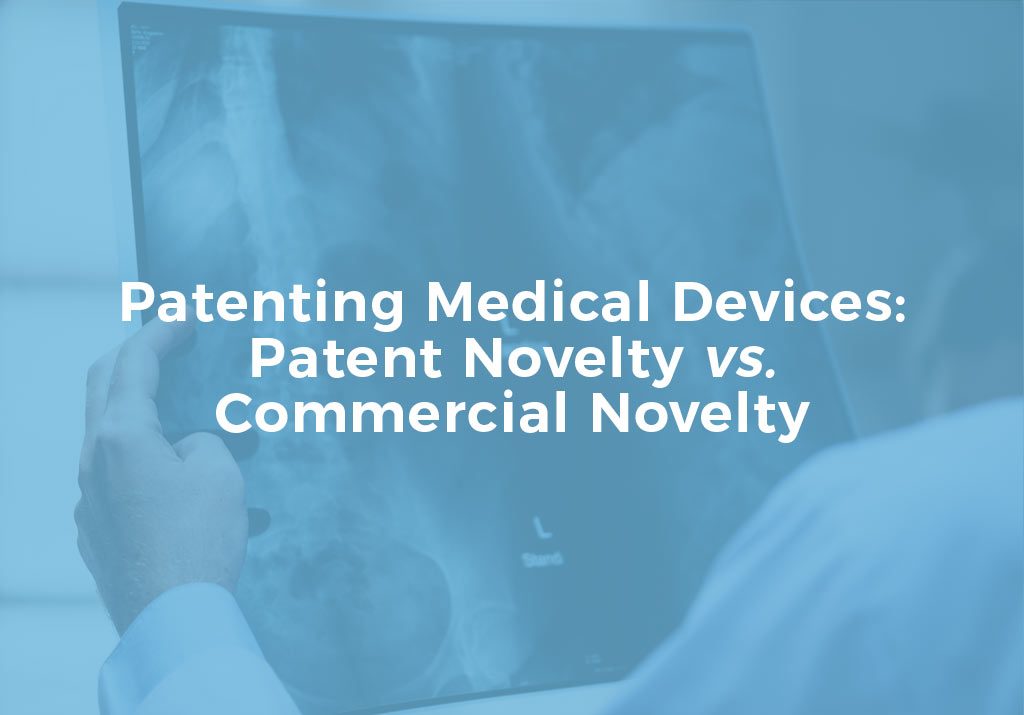As with any invention, it is important for innovators and medical device companies to understand that there is a difference between patent novelty and commercial novelty. These two types of novelty are both important in terms of commercialization and monetization of an innovative new medical technology, but they are distinct concepts. You may have patent novelty, but not commercial novelty, or vice versa. Ideally, you would want your medical device to have both patent novelty and commercial novelty.
Under US patent law, to be patentable, a medical device invention must be new. Novelty of invention is governed by 35 U.S.C. §102, which requires the invention be novel and not anticipated by the prior art, meaning there shouldn’t be any other medical devices or literature in the world that looks just like your invention. An innovation must have patent novelty in order to be eligible for patent protection.
Commercial novelty, on the other hand, is taking a product, method or invention from one area of the marketplace into another, i.e., the product is new or novel in the particular market it is being sold in. The transition could be from one technology area or field of industry to another, or from research and development into the market. If a medical device invention is commercially novel it does not necessarily mean that the invention is also novel for patent purposes.
Understanding Commercial Novelty and Patent Novelty in Real World Applications
Take, as an example, the use of rubber gloves. Generally speaking in a medical setting, rubber gloves are a type of medical device. They serve to protect the medical care provider from diseases and viruses and other pathogens that might be transmitted by bodily fluids touching the skin. Gloves also serve a sanitary purpose. However, typical medical gloves are thin and easily punctured by needles and other sharp objects.
Yet rubber gloves are used in other industries, and those gloves are designed to be quite strong and puncture resistant. Gloves like this are used for construction work, masonry, work involving acid washes, and related construction industry processes. These tough, rubber gloves can be purchased at the hardware store.
Taking construction-grade rubber gloves, redesigning them to be easily usable by medical care providers, and then marketing them to the healthcare industry is a good example of commercial novelty. But simply finding a new commercial use for the gloves does not mean you can obtain a patent on the construction-grade rubber gloves. In order to patent puncture resistant gloves, it is not enough to use them in a novel way; you must invent a new glove — maybe with a new process or a new polymer or some new combination of raw materials, in order to establish patent novelty.
When You Have A Novel Medical Invention, Contact Us
If you need more information about the novelty requirements for patentability for your medical device invention, we would be more than happy to discuss your particular situation with you. Please do not hesitate to contact an experienced patent attorney at Rapacke Law Group. Contact us today to schedule a free initial consultation with one of our attorneys.




